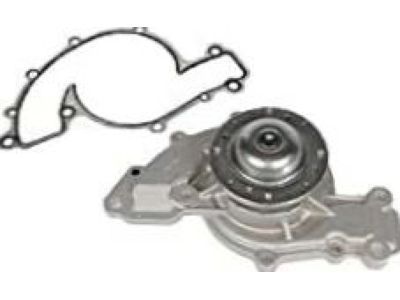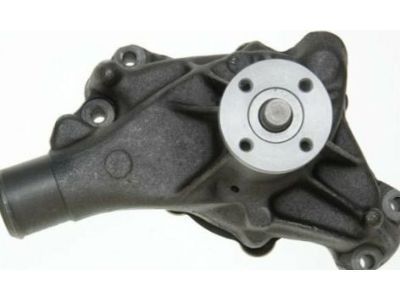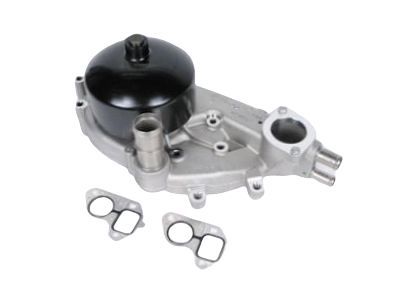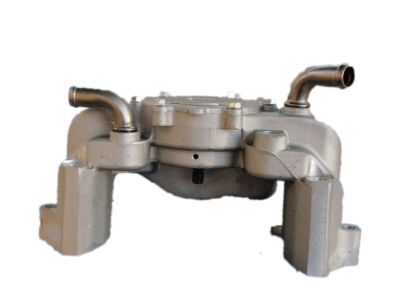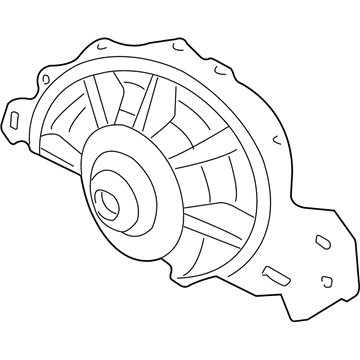My Garage
My Account
Cart
Genuine Pontiac Firebird Water Pump
H2O Pump- Select Vehicle by Model
- Select Vehicle by VIN
Select Vehicle by Model
orMake
Model
Year
Select Vehicle by VIN
For the most accurate results, select vehicle by your VIN (Vehicle Identification Number).
12 Water Pumps found
Pontiac Firebird Engine Coolant Pump Kit
Part Number: 19209288$121.23 MSRP: $240.52You Save: $119.29 (50%)Ships in 1-2 Business DaysPontiac Firebird Water Pump Kit
Part Number: 19417097$127.28 MSRP: $252.53You Save: $125.25 (50%)Ships in 1-2 Business DaysPontiac Firebird Engine Coolant Pump Kit
Part Number: 88894247$208.64 MSRP: $393.66You Save: $185.02 (47%)
Pontiac Firebird Water Pump
Water Pump in Pontiac Firebird car model is responsible for transferring coolant from the radiator to dispense heat form the engine which is produced during the process of combustion. The majority of designed models work under the principle where a belt-driven pump featuring an impeller is used to circulate the coolant through the engine block and then to the radiator. In the old days, actual cast iron pumps were used yet today, most pumps are made of aluminum castings with increased efficiency. Signs of a bad water pump are the coolant leak, noises from the pump due to the damage bearings and excessive heating of the engine. For high performance engines there are better water pumps with high pressure impellers as well as improved internal passages to enhance the flow of coolant and thereby minimize the parasitic source of power loss. Water pumps can also be electric to increase efficiency and a cooling capability especially in custom applications with confined spaces.
Each OEM Pontiac Firebird Water Pump we offer is competitively priced and comes with the assurance of the manufacturer's warranty for the part. Furthermore, we guarantee the speedy delivery of your orders right to your doorstep. Our hassle-free return policy is also in place for your peace of mind.
Pontiac Firebird Water Pump Parts Questions & Experts Answers
- Q: How to remove and install a water pump on Pontiac Firebird?A: Disconnect the cable from the negative battery terminal. Drain the cooling system. On models with multiple V-belts, mark the accessory drive belts with white paint to simplify installation. On models with an engine-driven fan, remove the upper fan shroud. On models with multiple V-belts, remove the accessory drive belts by loosening the pivot and adjusting bolts and pushing the accessory toward the engine. On models with a single serpentine belt, rotate the belt tensioner pulley away from the belt to release the tension on the belt, remove the belt, and release the tensioner. On some engines, it may be necessary to remove one or more accessories to gain access to the water pump. Remove the bolts retaining the fan to the fan pulley hub, then separate the fan and pulley hub from the water pump. Disconnect the heater and lower radiator hoses from the water pump. Remove the water pump mounting bolts and separate the water pump from the engine. Prior to installing the water pump, remove all old gasket material and sealant from the gasket sealing surfaces. Clean the threaded holes in the block as well. Installation is the reverse of the removal procedure. If a new water pump is being installed, transfer the heater hose fitting from the old pump to the new one. On L4 engines, use a new gasket or RTV type sealant when installing the pump. On V6 and VB engines, use a new gasket when installing the pump. Tighten the bolts to the specified torque after coating the threads with RTV sealant to prevent leaks. Adjust all drive belts. Connect the negative battery cable and fill the radiator with a mixture of antifreeze and water. Start the engine and allow it to idle until the upper radiator hose gets hot. Check for leaks. With the engine hot, fill the radiator with more coolant mixture until the level is at the bottom of the filler neck. Install the radiator cap and check the coolant level periodically during the first few miles of driving.
- Q: What are the ways to check the operation of the water pump while it is still installed on Pontiac Firebird?A: A faulty water pump can cause engine overheating and damage due to lack of coolant circulation. Three checks can be performed on the pump. First, squeeze the upper radiator hose when the engine is warm; a working pump will cause a pressure surge. Second, inspect the pump's "weep" holes for coolant leakage, indicating a seal failure. This may require a flashlight from underneath the vehicle. Lastly, a squealing sound or movement in the water pump pulley may indicate shaft bearing failure. Don't confuse this with drive belt slippage, which also causes squealing. Replace a defective pump immediately.
Related Pontiac Firebird Parts
Browse by Year
2002 Water Pump 2001 Water Pump 2000 Water Pump 1999 Water Pump 1998 Water Pump 1997 Water Pump 1996 Water Pump 1995 Water Pump 1994 Water Pump 1993 Water Pump 1992 Water Pump 1991 Water Pump 1990 Water Pump 1989 Water Pump 1988 Water Pump 1987 Water Pump 1986 Water Pump 1985 Water Pump 1984 Water Pump 1983 Water Pump 1982 Water Pump

